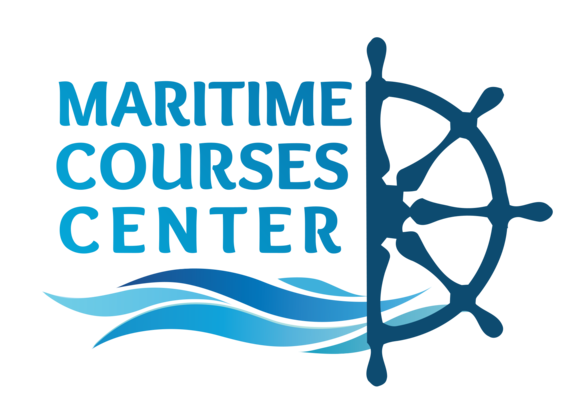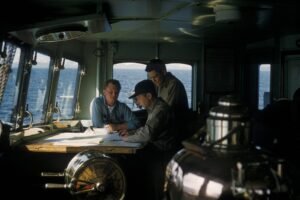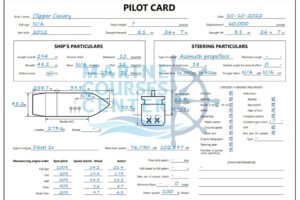Introduction to Tides: Understanding the Movement of Water

Introduction to Tides
The Phenomenon of Tides: Understanding the Movement of Water
Tides are one of the most powerful natural forces in the world, affecting the depth of water and the movement of ships in the ocean. For those living by the sea, navigating in the waters, or participating in activities such as surfing or yachting, understanding the tides is crucial for safety and confidence. Whether you’re a seasoned sailor or just starting out, it’s important to be aware of the tides and their impact on navigation.
What are Tides?
Tides refer to the wholesale horizontal movement of water, causing changes in the depth of water and the movement of ships. Tides are different from currents, which are typically driven by wind. Tides are most influential in coastal waters where they interact with shallows, river estuaries, islands, and promontories, creating a constantly changing environment that can be challenging for navigators.
The Science Behind Tides
The primary cause of tides is the gravitational pull of the moon, with the sun playing a smaller role. The moon’s gravitational pull causes the water on the earth’s surface to rise on the side facing the moon, creating high water (HW) while a similar rise of water occurs on the opposite side. This leads to low water (LW) due to the outward flow of water.
There are several important facts to consider when it comes to the science behind tides:
The earth rotates once every 24 hours in an anticlockwise direction when viewed from above the North Pole.
The moon orbits the earth in the same direction as the earth’s rotation, taking approximately 27.5 days (1 lunar month) to complete each orbit.
Most places on earth experience two high tides and two low tides every day, known as a semi-diurnal cycle. Some areas, such as parts of the Pacific Rim, only experience a single tide cycle (diurnal tide), while others may experience a combination of diurnal and semi-diurnal tides during a single month.
Navigating on the surface of the sea requires a deep understanding of the tides, as well as the unseen space below the keel of your ship. It’s not enough to just navigate in two dimensions, as the state of the tide and the depth of water under the keel must be monitored at all times. The prospect of a Ultra-Large Crude Carrier (ULCC) with a draft of 25 meters navigating the English Channel without knowledge of tidal levels is unthinkable.
Conclusion
Tides are a powerful and ever-changing force in the world’s oceans, affecting the depth of water and the movement of ships. Understanding tides is crucial for navigators and those participating in water-based activities such as surfing or yachting. With the right knowledge and preparation, we can navigate the waters with confidence and safety.
What are tides?
Tides refer to the wholesale horizontal movement of water that causes changes in the depth of water and the movement of ships. Tides are different from currents, which are typically driven by wind. They are most influential in coastal waters where they interact with shallows, river estuaries, islands, and promontories, creating a constantly changing environment.
Tides refer to the movement of water causing changes in depth and ship movement.
Tides are different from currents which are driven by wind.
Tides are most influential in coastal waters.
What is the science behind tides?
The primary cause of tides is the gravitational pull of the moon, with the sun playing a smaller role. The moon’s gravitational pull causes the water on the Earth’s surface to rise on the side facing the moon, creating high water (HW), while a similar rise of water occurs on the opposite side, resulting in low water (LW) due to the outward flow of water.
The primary cause of tides is the gravitational pull of the moon.
The moon’s gravitational pull causes high water on one side and low water on the opposite side.
The sun plays a smaller role in causing tides.
What are the important facts about the science behind tides?
– The Earth rotates once every 24 hours in an anticlockwise direction when viewed from above the North Pole.
– The moon orbits the Earth in the same direction as the Earth’s rotation, taking approximately 27.5 days (1 lunar month) to complete each orbit.
– Most places on Earth experience two high tides and two low tides every day, known as a semi-diurnal cycle. Some areas only experience a single tide cycle (diurnal tide), while others may experience a combination of diurnal and semi-diurnal tides.
Why is understanding tides important for navigation and water-based activities?
Navigating on the surface of the sea requires an understanding of the tides, as well as the unseen space below the keel of a ship. Monitoring the state of the tide and the depth of water under the keel is crucial at all times. Without knowledge of tidal levels, navigation can become dangerous, as seen in the example of an Ultra-Large Crude Carrier (ULCC) with a draft of 25 meters navigating the English Channel.
Understanding tides is crucial for navigators and those participating in water-based activities.
Monitoring the state of the tide and depth of water is important for safe navigation.
Lack of knowledge of tidal levels can be dangerous, as seen in the example of an ULCC navigating the English Channel.
What is the conclusion about tides?
Tides are a powerful and ever-changing force in the world’s oceans that affect the depth of water and the movement of ships. Understanding tides is important for navigators and those participating in water-based activities such as surfing or yachting. With the right knowledge and preparation, we can navigate the waters with confidence and safety.
Tides are a powerful and ever-changing force in the ocean.
Understanding tides is important for navigators and those participating in water-based activities.
Proper knowledge and preparation can lead to safe navigation.
Leave A Reply
You must be logged in to post a comment.




1 Comment